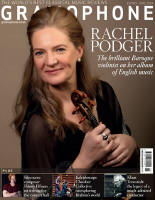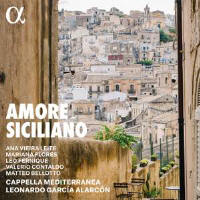Texte paru dans: / Appeared in: |
|
| Reviewer : Mark Seow |
|
|
Things start ordinarily enough. Cappella Mediterranea under the direction of Leonardo García Alarcón create a mournful sound world, with recorders and violins exquisitely wrapping round the voice. But listen closer, and you might detect a strange mixing of musical vocabularies: indeed, Vincenzo Tozzi lived practically a century before Alphonsus Maria de Liguori. What’s going on?
The buzzing bassoon barging in for Carapella’s ‘Ho vinto, Amor’ makes it clearer that we are dealing with a pasticcio. With ‘Amore Siciliano’, Alarcón has created a musical drama, with many of the works deriving from the archive of the Co-Cathedral of St John in Malta. The loose plot: Cecilia, a young woman betrothed to Giuseppe, who is languishing in prison, meets the powerful Don Lidio on Christmas Eve in church. The obvious happens – they fall in love – and there begins the tragic unfolding.
There’s a fabulously frantic air to the sequence of the opening movements, and in general this is the approach to the playing throughout: totally gung-ho, extreme and unexpected. The atmosphere is charmingly imprecise and spontaneous. The bassoon-playing of Mélanie Flahaut, impeccably judged throughout the album, somewhat epitomises this. After her bolshy entrance, you’ll find her slipping into cobwebbed corners in ‘U’ ciucciu’. Detecting her is a somewhat difficult task when tenor Valerio Contaldo is, in the best possible way, distractingly hyperbolic. And again in Amodei’s ‘In solitarie arene’, perhaps my favourite movement on the album, Flahaut moves between burnished luxury and flexible colla parte. The interesting textural combinations make the instrumentalists on this album less a backdrop to the voices and more characters in themselves.
Structurally, the album’s interest lies in how ‘La canzone di Cecilia’ returns in different guises to elucidate the plot’s progress. While, of course, the voices characterise this development, again it is the instrumentalists who do the heavy lifting: Alarcón’s cheeky fingers on the organ and the semitonal slithering in the violin (track 13); harpist Marie Bournisien’s frail accompaniment to a song barely sung (track 19); and the colourful instrumental melange that sways with forlorn lust (track 22). Indeed, it’s quite a fun if not perverse activity to skip between these different variations of Cecilia’s song. |
|




